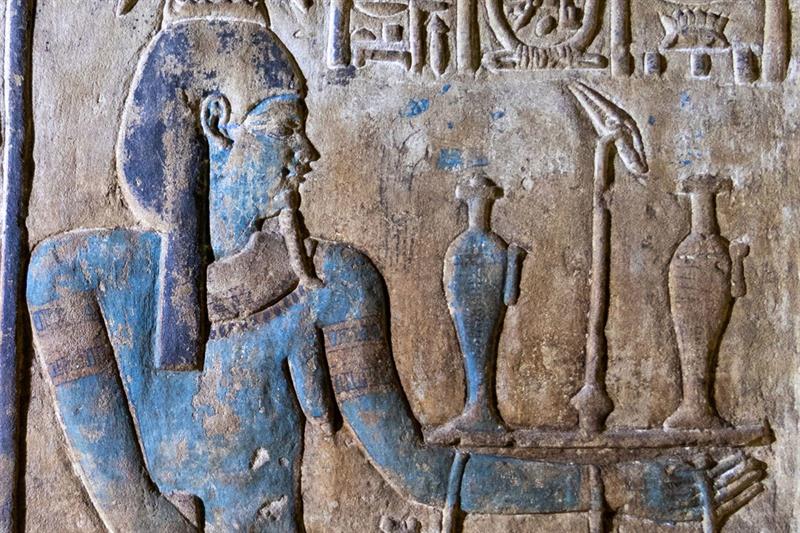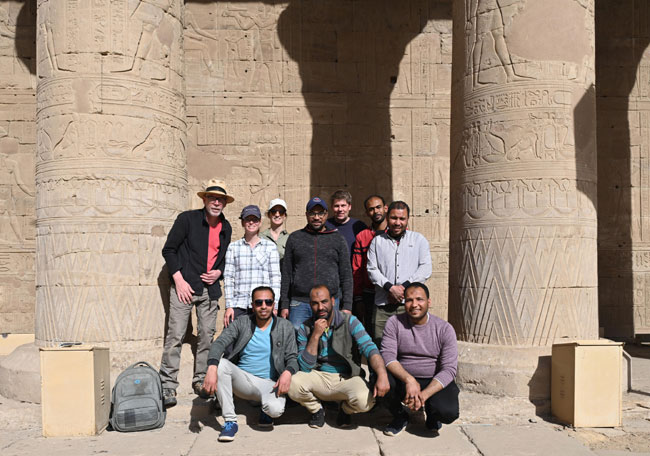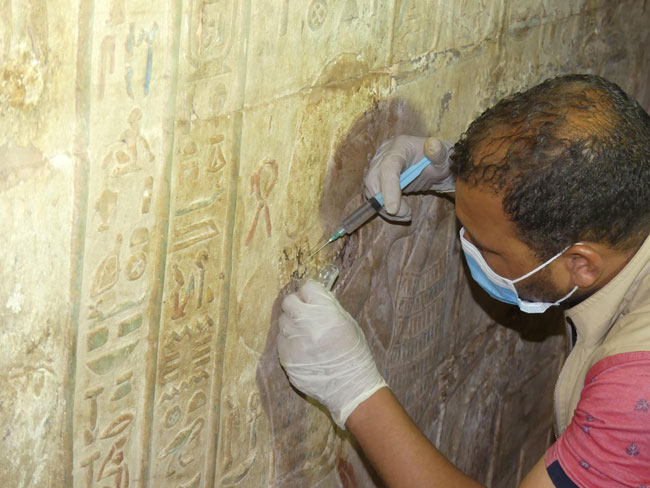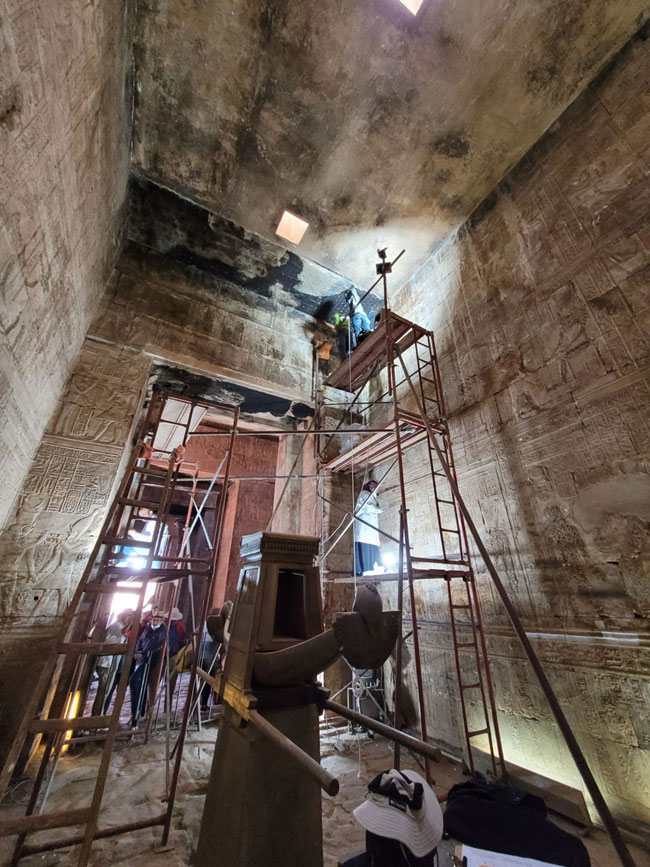Through the work of a joint archaeological mission, a new section of the Edfu Temple in Upper Egypt revealed never-before-seen original hieroglyphic inscriptions and colored carved scenes written by priests in demotic script.
This joint mission, carried out by Egypt’s Supreme Council of Antiquities and Germany’s University of Würzburg, focused on the restoration of the temple’s ceiling, which was dedicated to the temple of the falcon-headed god Horus.
The restoration project, funded by the German Gerda Henkel Foundation, has been underway since 2021 and aims to preserve and enhance the ancient temple’s historical value.
Minister of Tourism and Antiquities, Sherif Fathy, praised the efforts to remove the layers of buildup dirt that had covered these sites for decades and highlighted the processes involved in reviving these colors to their original state.
Traces of golden hues used to gild raised inscriptions were found, including depictions of royal jewelry, emblems, and depictions of deities.
“The gilding of the figures presumably not only served to symbolically immortalize and deify them but also contributed to the mystical aura of the room. It must have been very impressive, especially when the sunlight was shining in,” Victoria Altmann-Wendling, the project manager and research fellow in the Horus Beḥedety Project at Julius-Maximilians-Universität Würzburg, said.
The inscriptions in the temple indicate that some of its structures were once covered with thick metal sheets made of gilded copper, according to the Head of the Egyptian Antiquities Sector at the Supreme Council of Antiquities, Ayman Ashmawy. He also emphasized that the Egyptian-German team successfully uncovered traces of this gilding in several locations in the upper parts of the walls of the temple’s sacred boat shrine.
Preserving Egyptian Culture
Mohamed Ismail Khaled, Secretary-General of the Supreme Council of Antiquities, highlighted that the restoration of the Temple of Edfu is a crucial effort to safeguard Egypt’s cultural and historical heritage. He regards Egypt’s heritage as a legacy for all of humanity.
The project focuses on cleaning the temple’s walls, republishing its inscriptions and scenes, and creating a digital archive. The new editions will offer more precise translations and studies, improving older versions published over the past century.
The restoration will also address the temple’s sanctuaries and inner walls, stabilize fading colors, remove soot, and conduct in-depth studies of the texts and imagery in the Holy of Holies and surrounding rooms.
The Temple of Horus at Edfu, the second-largest temple of ancient Egypt by size, is one of the best-preserved temples in Egypt. It was constructed during the reign of King Ptolemy III Euergetes and was completed under King Ptolemy XII.
While it features a wealth of inscriptions and illustrations that provide important information about the ancient Egyptian language, mythology, religious beliefs, and worship practices, the new discovery offers fresh insights into Ptolemaic-era Egyptian religious practices.










Comments (0)